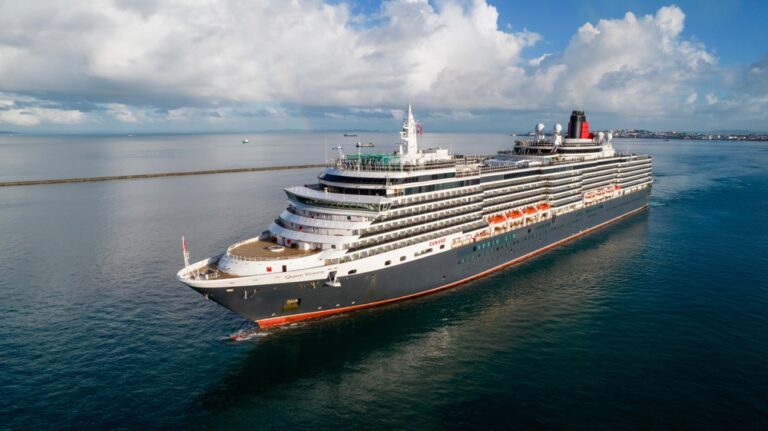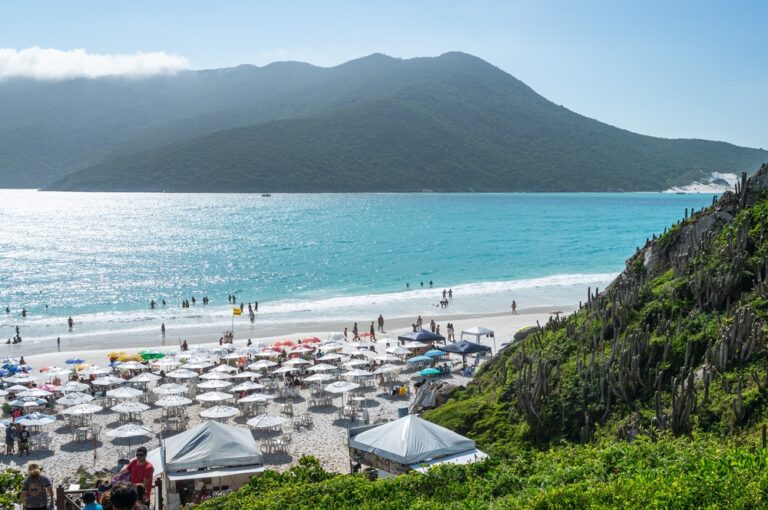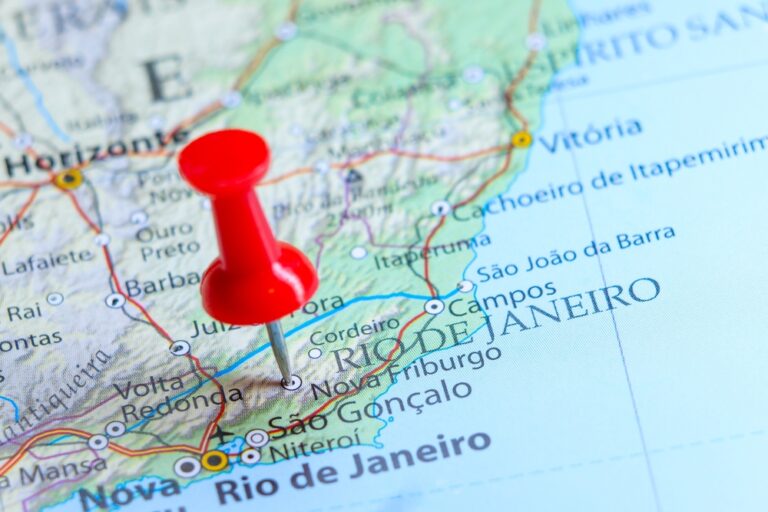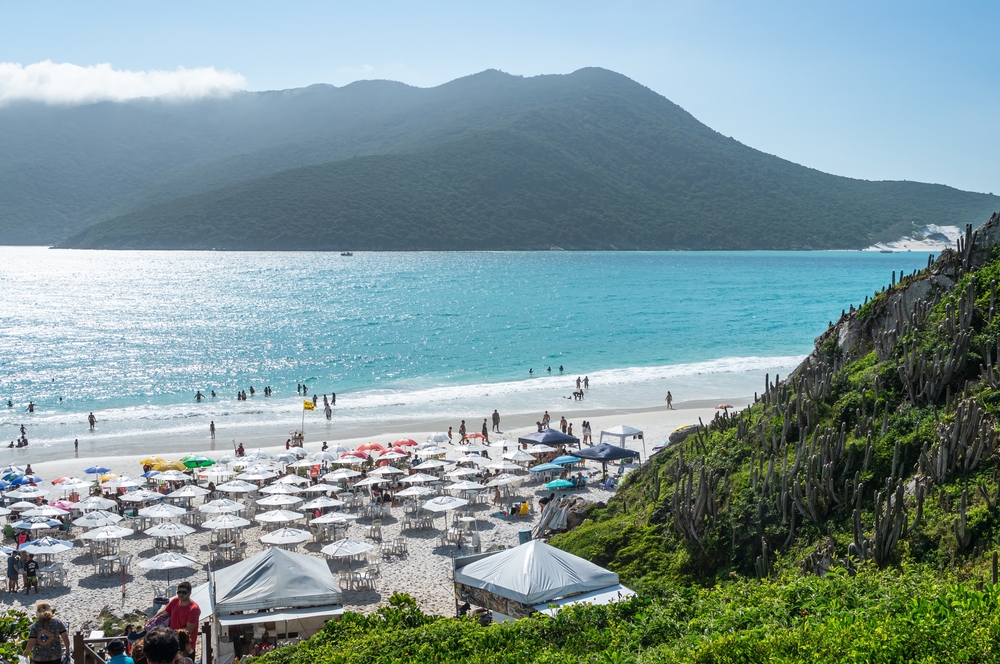Belo Horizonte, the capital of Minas Gerais, Brazil, is a modern and thriving city with a rich history and an array of attractions. Established in the 1890s as a planned city to replace Ouro Preto as the capital, Belo Horizonte boasts a grid and diagonal avenue layout inspired by Washington, D.C. It has become the hub of the state’s central region, engaging extensively in mining activities and livestock farming in the western sertão, as well as fostering a buzzing commercial center with banking, commerce, and administration.
Locally known as Beagá, or BH, the city’s name translates to “beautiful horizon” due to the scenic mountain views surrounding the urban landscape. While the growing metropolis may make it more difficult to appreciate the natural beauty, Belo Horizonte remains Brazil’s third-largest city and retains its unique charm. Visitors can explore diverse attractions, including its famous Central Market, the elegant Praca da Liberdade, and various historical landmarks, showcasing Minas Gerais’ rich cultural heritage.
The diverse activities and experiences offered by Belo Horizonte cater to a wide range of interests, making it an ideal destination for both local and international travelers. With a vibrant arts scene, numerous culinary delights, and a welcoming atmosphere, the city of Belo Horizonte is a fascinating blend of traditional and contemporary Brazil, ready to be explored and enjoyed.
Table of Content
ToggleHistory
Belo Horizonte, the capital of Minas Gerais state in Brazil, started its journey as a small village. The city’s development can be traced back to the early 18th century when João Leite da Silva Ortiz, an explorer from Brazil, settled in the area and established a farm called Curral d’el Rey in 1701.
The decision to replace Ouro Preto as the capital of Minas Gerais led to the planning and construction of the city in the 1890s. This change shifted the region’s focus from the colonial era, leading to a new chapter in its history.
Belo Horizonte was not only the first planned modern city in Brazil but also the first to adopt a planned urban real estate market. This approach, however, resulted in the creation of one of Brazil’s first informal shantytowns or favelas.
The city derives its name from the beautiful horizon formed by the Curral del Rey Mountains which encircle it. Lying on the eastern edge of Brazil’s dry interior, Belo Horizonte has grown over the years into a vibrant and important city.
An essential part of Belo Horizonte’s history is its connection with gold and the nearby city of Diamantina. Both cities have played significant roles in the gold rush of the 18th and 19th centuries, contributing to the rapid development of Minas Gerais.
A key figure in Belo Horizonte’s modern growth was Juscelino Kubitschek, a Brazilian President, who initiated ambitious construction projects to modernize the city. This has shaped Belo Horizonte into an important urban center and provided it with critical infrastructure that continues to benefit its residents today.
In summary, Belo Horizonte has a diverse and dynamic history that encompasses its origins as a small village, its unique position as the first planned city in Brazil, and its ongoing growth as a modern metropolis. With strong connections to its surrounding region and bearing the influence of prominent figures, the city stands as an essential part of Brazil’s narrative.
Geography
Belo Horizonte, the capital city of the Minas Gerais state in southeastern Brazil, is situated on the western slope of the Espinhaço Mountains. The city’s elevation is approximately 2,720 feet (830 meters) above sea level, which contributes to a milder climate compared to other nearby regions (source).
The city is known for its “Beautiful Horizon”, which is an apt translation of its name. This horizon is largely due to the picturesque Serra do Curral mountain range that envelops Belo Horizonte. The Serra do Curralserves as both a natural border and a stunning landscape feature for the city.
Within the larger Minas Gerais state, there are rivers and valleys that play a crucial role in the area’s geography. For instance, the Rio Grande and the São Francisco River are essential for the state’s water resources and ecosystems (source).
Iron is a significant natural resource found in this region, and the presence of the mineral has substantially impacted Belo Horizonte’s development and economy. The surrounding mountains, such as the Espinhaço range, are ideal locations for iron mining operations, which in turn have influenced the city’s growth.
In terms of climatic conditions, Belo Horizonte’s location at 19°55″ South latitude places it within the tropical zone. The city experiences a tropical savanna climate (Aw), with warm and humid summers, and mild and dry winters. The typical annual temperature ranges from 9 to 35 °C (48 to 95 °F) (source).
Climate
Belo Horizonte’s climate is characterized as warm and temperate, with mild temperatures throughout the year. The city experiences distinct wet and dry seasons, with summers being rainy and winters predominantly dry and sunny. The average annual temperature in Belo Horizonte is 20.8°C (69.4°F), making it a comfortable destination for visitors and residents alike.
During the summer months, which span from December to February, Belo Horizonte experiences warm to hot weather. In January, the average temperature is 25.0°C (77°F), with minimum temperatures of 20.3°C (68.5°F) and maximum temperatures reaching 29.6°C (85.3°F). These months bring higher levels of rainfall, adding to the city’s lush greenery and vibrant atmosphere.
In contrast, the winter months of June to August offer cooler, drier weather. Temperatures during this time vary between 11°C and 31°C (52°F and 88°F), with an average of 22°C (72°F) according to Wikipedia. The lower humidity and rainfall during winter make it a popular time for outdoor activities and exploring the city’s many cultural attractions.
Belo Horizonte’s climate can also be influenced by the altitude, as the city is located roughly 852 meters (2,795 feet) above sea level, which contributes to its overall mild and comfortable climate. The combination of both warm and cool periods throughout the year, along with the varying levels of rainfall, provide a diverse range of environmental conditions suitable for different preferences and activities.
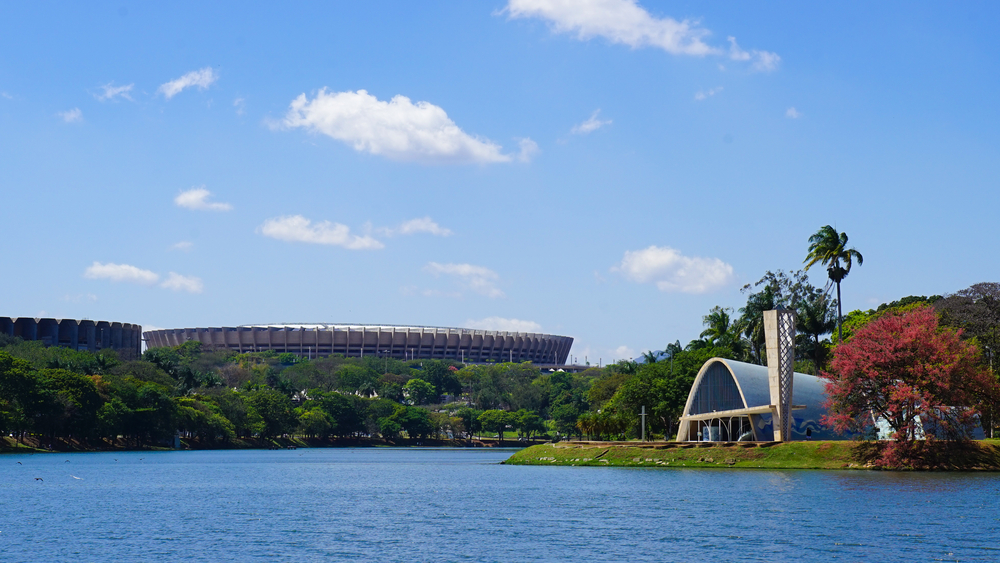
Culture and Arts
Belo Horizonte is a vibrant city with a rich cultural scene, offering a variety of artistic experiences to its visitors and residents.
Museums
The city is home to several notable museums that showcase art, history, and culture. One such institution is the Mineiro Museum, which presents a collection of historical artifacts and regional artwork. Additionally, the Memorial Minas Gerais Vale offers immersive displays that tell the story of Minas Gerais’ cultural history.
Located within the beautiful Praça da Liberdade architectural complex, the Centro Cultural Banco do Brasil Belo Horizonte hosts rotating exhibitions and cultural events. This magnificent 1920s building provides a space for theater, film, and dance performances, as well as features a relaxing interior courtyard with cafes and stained glass windows.
The Circuit Cultural Praça da Liberdade is a group of cultural institutions surrounding the iconic square, providing a concentrated space for arts and events. Among these institutions is the world’s largest open-air contemporary art museum, which showcases an extensive range of modern art in its sprawling, world-class garden complex.
Literature
The literary scene in Belo Horizonte has produced renowned authors such as Carlos Drummond de Andrade, a significant Brazilian poet whose work has left an indelible mark on the city. His poetry continues to inspire generations of readers and adds to the city’s rich literary legacy.
Performing Arts
Belo Horizonte boasts an active performing arts scene, with the Palácio das Artes being a focal point for creative expression. The palace hosts a diverse array of performances, such as dance, music, and theater productions. Both established and emerging talent take the stage, providing a varied and dynamic artistic atmosphere for audiences to enjoy.
Fine Arts
The influence of renowned architect Oscar Niemeyer can be seen throughout Belo Horizonte, particularly in his modernist designs for the city’s various public buildings. His innovative and bold vision has contributed to the city’s reputation as a center of fine arts, with his expansive and striking creations leaving a lasting impact on the cityscape.
In conclusion, Belo Horizonte’s cultural richness is evidenced through its wide range of museums, literary figures, performing arts venues, and architectural achievements. Visitors and residents alike can enjoy a diverse and inspiring artistic landscape in this thriving Brazilian city.
Architecture and Landmarks
Belo Horizonte, the sixth-largest city in Brazil, is known for its modern architecture and remarkable landmarks. One of the most iconic spots in the city is the Praça Sete de Setembro, a bustling square located in the heart of the city. Surrounded by historic buildings, this area is a testament to the city’s rich history and well-preserved architectural heritage.
Another noteworthy landmark is the Lagoa da Pampulha, an artificial lake that serves as a focal point for many of Belo Horizonte’s modernist architectural attractions. The lake’s picturesque promenade offers a serene space for a leisurely stroll and spectacular views of the surrounding architecture. Nearby, the stunning Church of São Francisco de Assis, designed by renowned Brazilian architect Oscar Niemeyer, stands as a symbol of modernism with its unique curves and bold design.
In addition to its architectural wonders, the city is also home to the Confins International Airport, an important transportation hub for the region. Conveniently located near major highways and offering a range of modern amenities, Confins International Airport is a testament to Belo Horizonte’s ongoing development and growth.
Visitors to the city should not miss a walk along Avenida Afonso Pena, one of the city’s most important thoroughfares. Lined with impressive buildings and monuments, this avenue provides a snapshot of Belo Horizonte’s architectural evolution and serves as a fascinating window into the city’s past and present.
In summary, Belo Horizonte’s architecture and landmarks offer a rich tapestry of history, innovation, and design, making it a must-see destination for anyone interested in the evolution of Brazilian urban landscapes.
Economy
Belo Horizonte, the capital of Minas Gerais state and Brazil’s sixth-largest city, has a vibrant and diversified economy. The city has experienced a significant economic transformation over the past 40 years, transitioning from an extractive industry-focused economy to one that is more knowledge and service-based, thereby reducing economic vulnerability to natural hazards.
In 2008, Belo Horizonte’s GDP was approximately R$ 42 billion (USD 26.2 billion), and the city’s per capita income was R$ 17,313 (USD 10,820). Business tourism has emerged as a major contributor to the city’s economy, making it a national hub for this segment of the tourism industry.
Multinational and Brazilian companies, such as Google, Deloitte, Thoughtworks, Localiza, Oi, and Fiat, maintain offices or headquarters in Belo Horizonte, further bolstering the city’s economic standing. The presence of these companies has attracted many visitors to the city, especially due to its location within Brazil’s main economic axis.
Some key industries in Belo Horizonte’s economy include:
Coffee: As the capital of Minas Gerais, a leading coffee-producing state in Brazil, Belo Horizonte plays a vital role in the country’s coffee industry. The city hosts numerous coffee processing and exporting facilities that contribute to the local economy.
Gemstones: Minas Gerais is also well-known for its abundant reserves of precious and semi-precious gemstones, and Belo Horizonte serves as a trading hub for these resources. The city hosts numerous gemstone processing and trading facilities, as well as a thriving jewelry industry.
Emeralds: Belo Horizonte’s gemstone industry is particularly renowned for its emeralds, which are considered among the finest quality in the world. The city’s emerald trade and mining operations contribute significantly to the local economy and foster employment opportunities.
In summary, Belo Horizonte’s economy is diverse and thriving, driven by a range of industries, including coffee, gemstones, and business tourism. The city’s strategic position within Brazil’s main economic axis and its proclivity for attracting major multinational and Brazilian companies make it an important contributor to the country’s overall economic performance.


